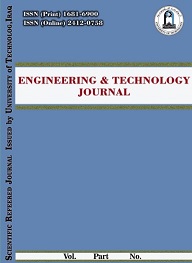Abstract
In this paper, the authors aim to introduce contamination in Al Tuwaitha nuclear
site, Iraq using GIS techniques and visual interpretation. This contamination problem
draws attention to the new result of high-radiation dose equivalents found in part of
the country. The radiation levels in Al Tuwaitha nuclear site, compared with the
international standards of UNSCEAR 2000 and world nuclear association (WNA
2011), the absorbed doses in the study area vary between (0.01-140) mrad/hr, in Al
Tuwaitha nuclear research center. The maximum radiation dose was nearby the
Russian 5 MW reactor. The absorbed dose in Russian 5 MW reactor was about (140)
mrad/hr which is the highest hotspot in Al Tuwaitha nuclear research center. The
obtained values of the average absorbed dose rate level are exceeding the permitted
level by (9500) times higher than environmental levels given by UNSCEAR (2000).
site, Iraq using GIS techniques and visual interpretation. This contamination problem
draws attention to the new result of high-radiation dose equivalents found in part of
the country. The radiation levels in Al Tuwaitha nuclear site, compared with the
international standards of UNSCEAR 2000 and world nuclear association (WNA
2011), the absorbed doses in the study area vary between (0.01-140) mrad/hr, in Al
Tuwaitha nuclear research center. The maximum radiation dose was nearby the
Russian 5 MW reactor. The absorbed dose in Russian 5 MW reactor was about (140)
mrad/hr which is the highest hotspot in Al Tuwaitha nuclear research center. The
obtained values of the average absorbed dose rate level are exceeding the permitted
level by (9500) times higher than environmental levels given by UNSCEAR (2000).
Keywords
Al Tuwaitha Nuclear Site
Exposure and Dose Rate
GIS Techniques and Visual Interpretation
Iraq
